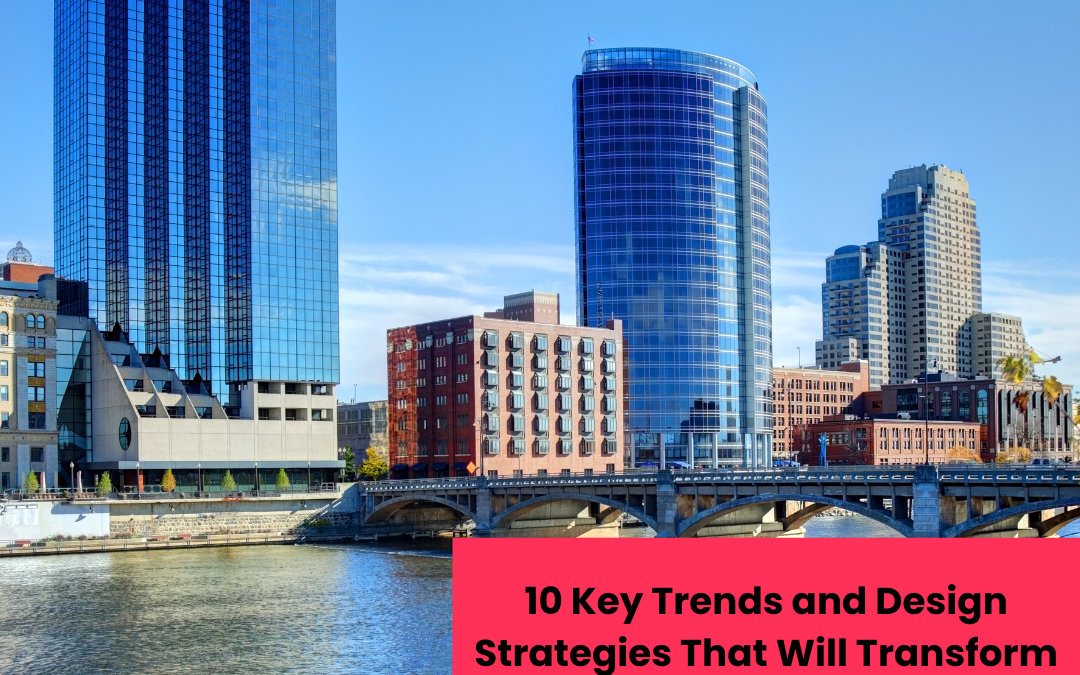In a world marked by significant financial instability, it’s crucial for companies to adopt strategies that prepare their real estate assets for enduring success. This article explores how urban development can convert challenges into opportunities, ultimately emerging more robust than before, by highlighting 10 key trends and design strategies that are reshaping cities and their inhabitants.
- Reclaiming Experience: The pandemic highlighted the importance of human interaction and the role of our spaces in enhancing life. By focusing on design strategies that cater to people’s needs and expectations, we can reinvent the human experience in our living, working, and leisure spaces.
- Live-Work Connection: The future of urban areas hinges on their ability to rejuvenate the relationship between living and working spaces. Cities that will thrive are those that use design to effectively tackle the intertwined issues of effective workplaces, affordable housing, and safe, accessible transportation.
- Building Transformation: Aging real estate is creating opportunities for urban regeneration, transforming old office buildings into vibrant residential areas. Owners and developers are using adaptive reuse strategies, particularly converting offices to residential spaces, to revitalize cities and create dynamic live-work environments.
- Attainable Housing: With rising interest rates and inflation, there’s a growing opportunity for multifamily developments to address the global shortage of affordable housing. Redesigning urban and central business districts to include affordable housing is key to creating live-work, mixed-use communities that will shape future cities.
- Decarbonization: The urgency to decarbonize the built environment is paramount. With the push from ESG and carbon disclosure requirements, more investments are being directed towards sustainable design and construction that reduce carbon footprint and document a building’s environmental and social impact.
- Mobility: The ongoing shift in mobility is paving the way for more integrated live-work cities. The adoption of electric and autonomous vehicles and public transportation is enabling the redesign of underutilized urban areas into mixed-use communities.
- Equitable Design: The demand for buildings and urban spaces with a positive social impact is guiding design decisions. From urban planning to building design, there’s a focus on addressing issues like inequality, aging populations, and community engagement.
- Intelligent Spaces: Property technology and smart building technologies are transforming how we experience spaces. The use of sensors, IoT, and other technologies not only enhances tenant experiences but also provides valuable data for developing better spaces.
- Flight to Quality: There is a continuing trend of office tenants preferring high-quality spaces. This move towards premium Class A spaces in prime locations with top amenities is shaping the office real estate market.
- Office as a Destination: The transformation of workplaces into compelling destinations is ongoing. The future of work lies in offices that provide diverse spaces and experiences, fostering focus and connection among employees.
About Perspective 3D
Based in Grand Rapids, Michigan, Perspective 3D specializes in custom solutions that allow businesses and organizations to uniquely connect people with places and spaces. By leveraging Matterport hardware and software, we turn buildings into data to make nearly every space more valuable and accessible when transformed into immersive Matterport digital twins that improve every part of the building lifecycle from planning, construction, and operations to documentation, appraisal and marketing.
Call us today. 616-312-3947
